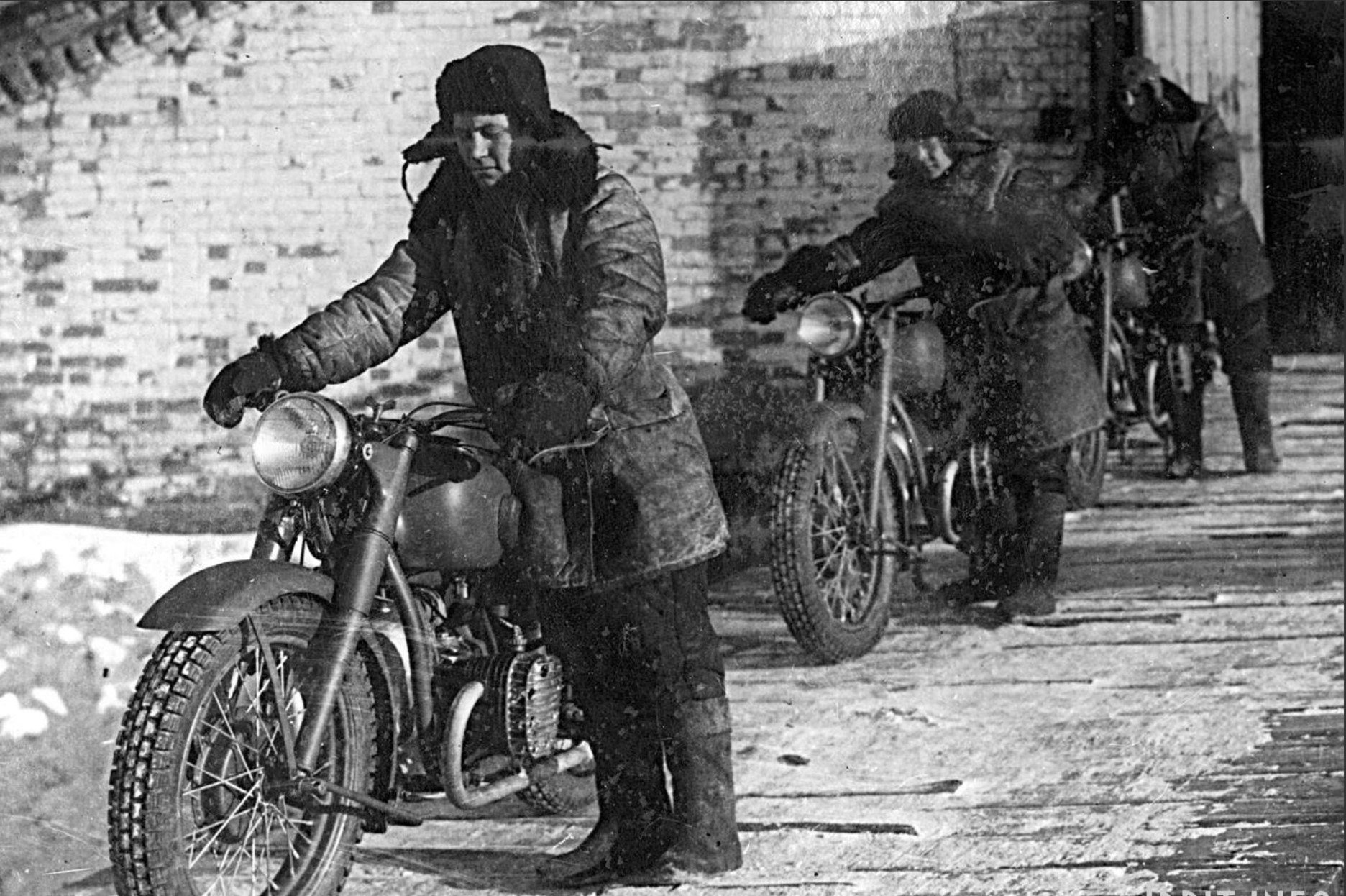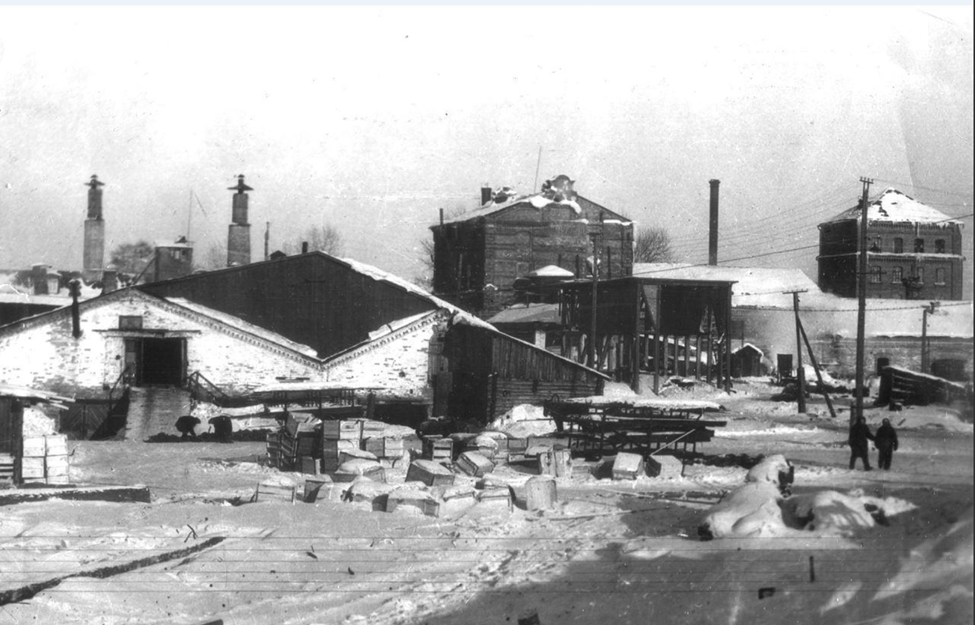The Company
Headquartered in Woodinville, Washington, with assembly facilities in Petropavlovsk, Kazakhstan, Ural Motorcycles is the oldest and one of the world's largest manufacturers of factory-ready sidecar motorcycles. Over three million sidecar motorcycles have been built by the company since inception. Urals are sold through the international dealer network in over 40 countries across five continents.
Pre-war and the Nazi Invasion
Ural's origins are linked to developments in the Eastern Front during World War II. Mobility was especially stressed after the Soviet Union had witnessed the effect of the blitzkrieg on Poland, and a small, rugged, multi-purpose vehicle that could handle Russia's underdeveloped road network and pockmarked battlefields was a priority.
A meeting was held at the People's Commissariat of Defense of the USSR at the end of 30s to devise a motorcycle that would be suitable for the Red Army, and BMW R71 motorcycle was found to closely match the Red Army's requirements. Five units were covertly purchased through Sweden and handed over to Moscow Motorcycle Plant, recently organized in a retooled bicycle factory. Soviet engineers dismantled the BMWs and reverse engineered the bike's design in every detail. Molds and dies were made to produce engines, gearboxes and other components. The production of these new military sidecar motorcycles, designated M-72 by the Red Army, started in August 1941.
The opening stages of Operation Barbarossa, the Nazis invasion of the Soviet Union in summer of 1941, were so swift and effective that Soviet strategists worried that Moscow would quickly be in range of Luftwaffe bombers. On October 21, 1941, the decision was made to move the motorcycle plant east, out of bombing range and into the resource-rich Ural mountain region. The site chosen was the town of Irbit, located on the fringes of Siberia in the Ural Mountains.
Irbit had been an important trade center throughout Russian history and was the site of the country's second largest fair before the Revolution of 1917. The only available building large enough to contain the factory was a brewery outside of town, beyond the railway line. This brewery became the Irbit Motorcycle Factory, or IMZ (Russian: Ирбитский мотоциклетный завод; Romanized: Irbitsky Motosikletny Zavod), and quickly began cranking out motorcycles for the war effort.
On February 25, 1942, the first batch of motorcycles—assembled from the parts brought from Moscow—went to the front. During WWII a total of 9,799 M-72 motorcycles were delivered for reconnaissance detachments of tank and mechanized brigades.








Post-war
After the war, the IMZ factory was expanded and updated, which including construction of frame and body parts shops, an aluminum foundry, and other shops to produce various motorcycle components. Throughout the 1950s, the motorcycles produced by IMZ were built mostly for military use. By the end of the decade, however, military production was moved to a sister plant in Kyiv, Ukraine, (KMZ) while IMZ focused on producing bikes for the domestic market. During this time, the IMZ facility grew into a massive, Soviet-style factory. The various shops produced everything from rubber and plastic parts to shock absorbers, brake components, and control cables. Nearly 10,000 people worked at the factory, and at its peak it produced around 130,000 motorcycles annually—primarily for the Russian domestic market as a cheap alternative to automobiles.
Ural Exports
IMZ began exporting motorcycles in 1953, mostly to Warsaw Pact states and USSR’s allies in Africa and Southeast Asia. In the 1970s, UK company Satra Motors imported Urals to sell under the Cossack Motorcycles brand. In 1994, an independent distributor called Ural America, located in Preston, WA, began selling Urals in the United States. This set the foundations of Ural's presence in America and led directly to the formation of the current Ural Company.
Roaring 90’s
In November 1992, the state-owned IMZ transformed into a privatized entity owned 40 percent by management and employees through grant, 38 percent by auction with privatization vouchers (mostly management and employees also), with 22 percent retained by the government.
At the beginning of 1998, the business was bought by Russian-Georgian statesmen and businessman Kakha Bendukidze. By that time, IMZ had almost completely lost its domestic market as Russians started buying used Western cars instead of sidecar motorcycles. In 1998 IMZ produced fewer than 2,000 units but the factory still employed nearly 4,000 people. To fix this problem, Bendukidze brought in new management and mandated new ideas. Investments were made to develop a two-wheeled motorcycle, the chopper-styled Ural Wolf. Unfortunately, the Wolf's price was too high and its quality was too low and the company couldn't sell enough bikes to stay afloat.
In October 2000, the factory had to halt production as it wasn't able to pay its bills and Bendukidze was unwilling to invest more money into the dying company. That December, Bendukidze sold the factory to three individuals—including the company's current CEO and majority shareholder, Ilya Khait—in a process of management buyout. The new owners immediately began reorganizing the factory by selling off assets, reducing the workforce by two-thirds, and consolidating production in the facility's smallest building. The new owners also decided to focus mainly on export markets and to do what the factory did the best—produce sidecar-equipped motorcycles. Motorcycle production restarted in the spring of 2001.
Modern Days
The next year, in 2002, the new owners decided to consolidate the disparate distribution networks under company control. The American distribution arm, Irbit Motorworks of America, Inc., was incorporated in Redmond, WA. Ural Motorcycles GmbH, the European distribution arm, was formed in Austria in 2003. Corporate headquarters was moved to the United States in 2006 with the formation of the holding company IMZ-Ural Group, Inc. in Redmond, WA. Besides the manufacturing entities, IMZ-Ural Group, Inc. currently owns distribution companies in the US, Australia, Japan, Spain, and the Czech Republic.
As of 2024, Ural Motorcycles are sold all over the world through a network of over 190 dealerships and service centers. Ural's main market is the United States. The company's bikes are also popular in Japan, Canada, UK, Australia, throughout the European Union, in China and other countries.
Move to Kazakhstan
During the opening rounds of Russia's 2022 invasion of Ukraine, IMZ-Ural released a statement condemning the invasion and calling for a peaceful resolution. In March of that year, Ural production ground to a halt due to inability to import components and export bikes out of Russia caused by international sanctions laid on the country.
The company decided to open a new assembly facility in Petropavl, Republic of Kazakhstan. Petropavlovsk, a city roughly 373 miles (600 kilometers) south-east of Irbit, was chosen because it had an established industrial infrastructure and a sizeable Russian-speaking population.
Production at the new factory, IMZ-Kazakhstan, began in August 2022, and shipment of new motorcycles started soon thereafter. Since then, all new Ural motorcycles have been built in Kazakhstan using parts supplied from all over the world.
































